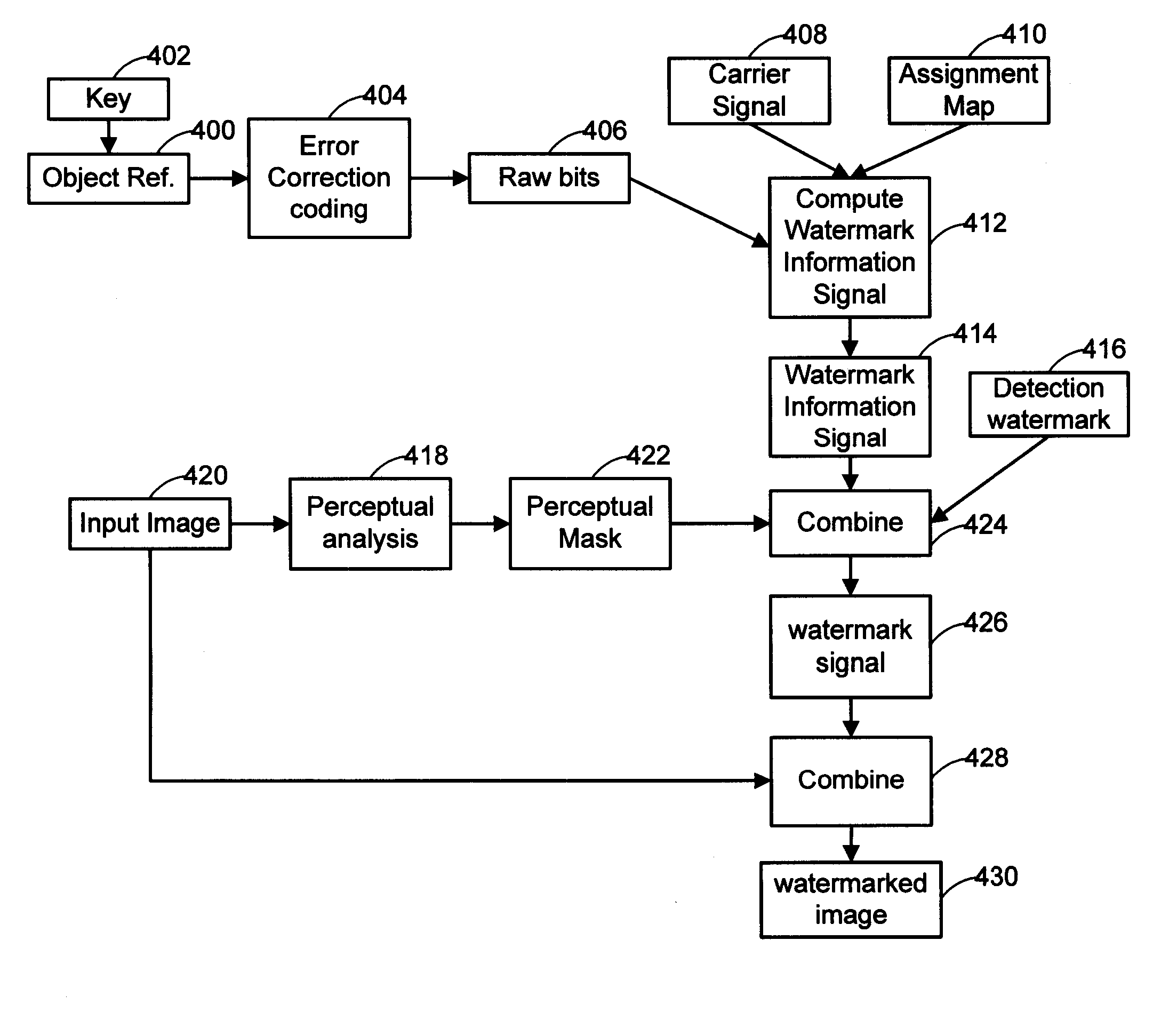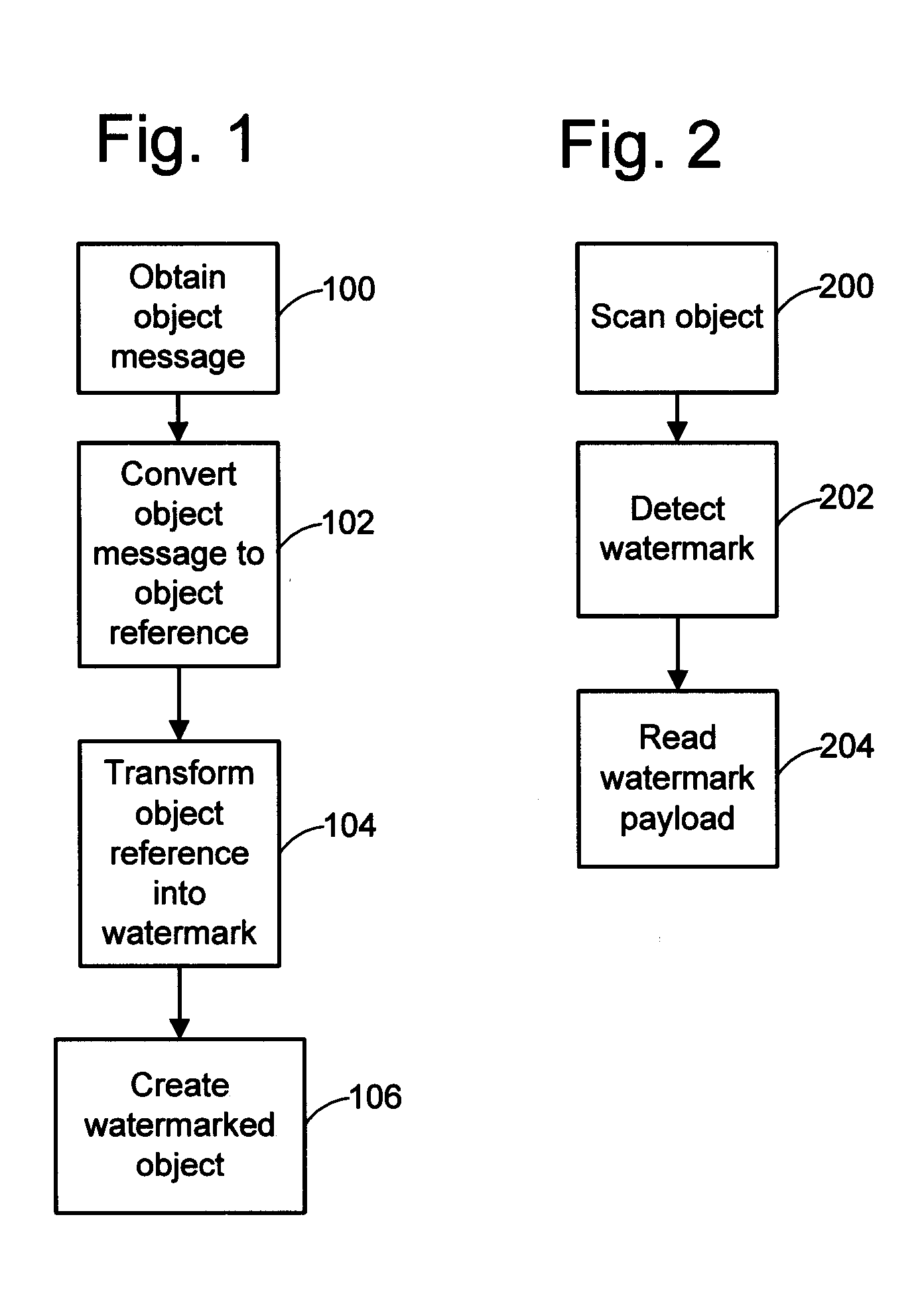Embedding and Reading Codes on Objects
a technology of machine-readable codes and objects, applied in the field of embedding and reading machine-readable codes on objects, can solve the problems of code not being aesthetically pleasing, occupying a dedicated portion of the physical object in which they reside, and needing to locate the code on a dedicated portion of the obj
- Summary
- Abstract
- Description
- Claims
- Application Information
AI Technical Summary
Problems solved by technology
Method used
Image
Examples
example implementations
of Digital Image Watermark Embedder and Reader
[0039] The following sections describe implementations of a watermark embedder and reader that operate on digital images. The embedder encodes the object reference into a digital image by modifying its image sample values such that the object reference is imperceptible to the ordinary observer in the output image. The embedder prints the output image on the surface of the object. To extract the object reference, the reader captures an image of the object and then processes it to detect the watermark and decode the object reference.
[0040]FIG. 3 is a block diagram summarizing image processing operations involved in embedding and reading a watermark. There are three primary inputs to the embedding process: the original, digitized image 300, the object reference 302, and a series of control parameters 304. The control parameters may include one or more keys. One key may be used to encrypt the object reference. Another key may be used to con...
PUM
 Login to View More
Login to View More Abstract
Description
Claims
Application Information
 Login to View More
Login to View More - R&D
- Intellectual Property
- Life Sciences
- Materials
- Tech Scout
- Unparalleled Data Quality
- Higher Quality Content
- 60% Fewer Hallucinations
Browse by: Latest US Patents, China's latest patents, Technical Efficacy Thesaurus, Application Domain, Technology Topic, Popular Technical Reports.
© 2025 PatSnap. All rights reserved.Legal|Privacy policy|Modern Slavery Act Transparency Statement|Sitemap|About US| Contact US: help@patsnap.com



